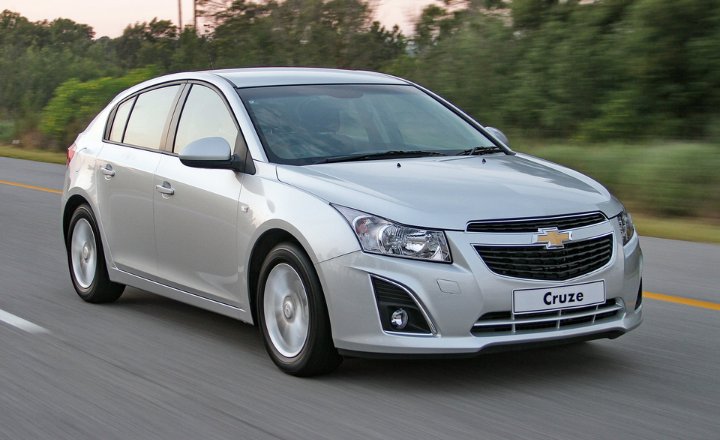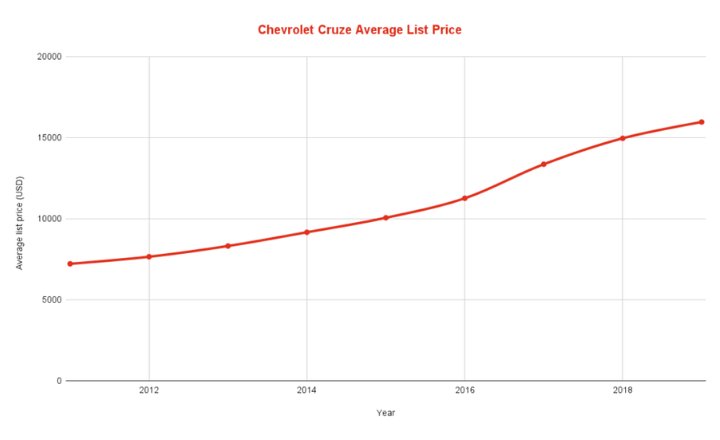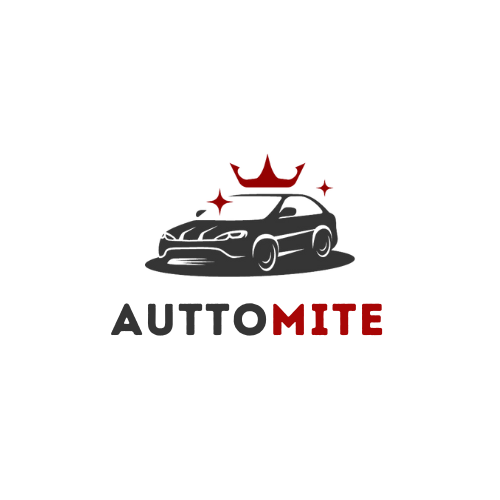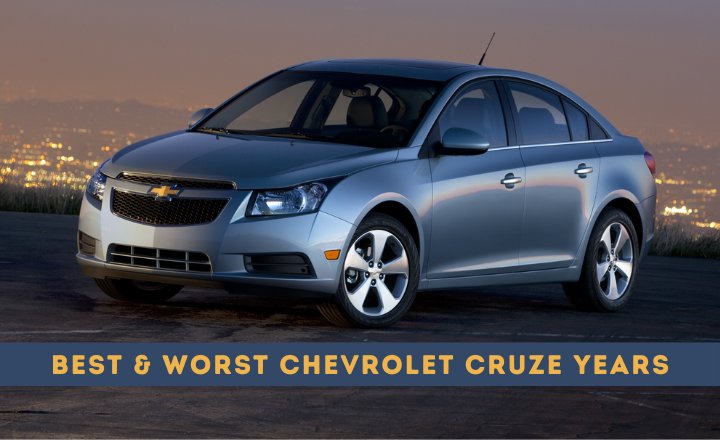The Chevrolet Cruze has been a reliable and popular compact car option for drivers around the world. With its sleek design, comfortable interiors, and efficient performance, it’s no wonder that the Cruze has garnered a loyal fanbase.
Not all model years of this beloved vehicle are created equal. In this article, we will delve into the best & worst Chevrolet Cruze years, exploring their strengths and weaknesses to help you make an informed decision for purchasing.
Chevrolet Cruze Generations
The Chevrolet Cruze made its global debut in 2008, instantly garnering attention for its sleek design and impressive performance.
It was hailed as a game-changer in the compact car segment, captivating buyers with its bold styling and fuel-efficient engines. It wasn’t until 2010 that the Cruze finally made its way to American shores, arriving as a 2011 model.
The Chevrolet Cruze brought a breath of fresh air to the domestic market, other compact cars struggled to stand out in terms of design and driving dynamics, the Cruze offered a compelling package that appealed to both enthusiasts and practical-minded consumers.
| Generation | Years |
| 1st generation (J300) | 2011-2015 |
| 2nd generation (D2LC) | 2016-2019 |
Its well-appointed interior featured high-quality materials and intuitive technology, making it feel like a higher-end vehicle than many of its competitors.
Chevrolet Cruze Best, Neutral, and Worst Years
The Chevrolet Cruze has been a popular choice in the compact sedan market, but like any car model, it has had its ups and downs over the years.
Our rankings of the Chevrolet Cruze’s best and worst years are based on extensive research that considers a range of factors. These factors include, but are not limited to:
- Reliability as reported by owners
- Yearly expenses for maintenance
- Ratings regarding safety
- Scores of reliability according to Consumer Reports
- Satisfaction scores from Consumer Reports owners
- Recalls, investigations, and complaints by NHTSA
- Ratings are given by Edmunds owners.
Following this, a chart will be provided that showcases the aggregated evaluations derived from the aforementioned sources.

I have compiled a comprehensive table showcasing the top-performing, average, and least favorable model years of the Chevy Cruze, drawing from a multitude of gathered data.
| Generation | Best Chevy Cruze Years | Worst Years |
| 1st generation (J300) | 2015 | 2011, 2012, 2013, 2014 |
| 2nd generation (D2LC) | 2017, 2018, 2019 | 2016 |
Best & Worst Years for Chevrolet Cruze 1st Generation (2011-2015)
The Chevrolet Cruze 1st Generation, produced between 2011 and 2015, has had its fair share of highs and lows.
Best Year Chevy Cruze: 2015
Chevrolet Cruze enthusiasts were treated to a stellar year with the introduction of its efficient 1.4-liter turbocharged 4-cylinder engine. This powertrain produced a modest yet compelling 138 horsepower and an impressive 148 lb-ft of torque.
The combination of power and efficiency made it a standout in its class of the Chevy Cruze best year. The turbocharged engine provided ample acceleration, delivering quick bursts of speed when needed while still maintaining excellent fuel efficiency.
It stood out among its competitors with its remarkable fuel efficiency. Offering an impressive blend of 17 mpg in the city and 36 mpg on the highway, this compact car proved that you don’t have to sacrifice power for fuel economy.
With rising gas prices and growing concerns about environmental impact, the Cruze was a clear winner for budget-conscious drivers who wanted to minimize their carbon footprint.
The Worst Years: 2011, 2012, 2013, 2014
Worst Years 2011: A devastating one for Chevrolet Cruze owners, as two major issues emerged: oil leakage from the valve cover gasket and steering gear shaft problems.
Many drivers reported finding oil spots on their driveways or noticing a burning smell coming from the engine compartment.
The leaking oil from the faulty valve cover gasket not only posed a potential fire hazard but also resulted in expensive repairs.
Worst Years 2012: Chevrolet Cruze owners faced a myriad of engine and transmission problems that left them frustrated and displeased with their vehicles.

Plagued these models were electrical malfunctions, particularly concerning the Stabilitrak light. Many drivers reported experiencing intermittent illumination of this warning light, signaling potential problems with the car’s stability control system.
These electrical issues became more pronounced as time went on, causing an increase in concern among Chevrolet Cruze owners.
The StabiliTrak light would often turn on unexpectedly for no apparent reason, leading to confusion and panic on the road.
Worst Years 2013, 2014 for Chevrolet Cruze: A potential fracture in the front right half shaft emerged as a major issue. This flaw had serious consequences, ranging from power loss while driving to even the unnerving possibility of rollaway when parked.
Imagine the anxiety of parking your car, thinking it’s safely immobilized, only to find it slowly inching forward or backward without any control.
Best & Worst Chevrolet Cruze Years 2nd Generation (2016-2019)
The second generation of the Chevrolet Cruze, which was manufactured between 2016 and 2019, exhibited a mixture of successes and challenges during its production.
The Best Years for Chevy Cruze: 2017, 2018, 2019
The year 2017 proved to be a remarkable one for the Chevrolet Cruze, especially when it came to its engine options. The 1.4-liter turbo-four engine stood out for its exceptional efficiency and improved power delivery.
This engine ensured a smooth and satisfying driving experience. With an impressive fuel economy of 19 mpg in the city and a commendable 47 mpg on highways, the Cruze became an ideal choice for those looking to save on fuel costs without compromising on performance.
In 2018 and 2019, the Chevrolet Cruze came equipped with some of the best safety features on the market, making it a top choice for those in search of a safe and reliable car. One of the standout features is the forward collision warning system.
This technology uses sensors to monitor the distance between your vehicle and the one in front of you, alerting you if there’s a potential collision imminent.
By providing an early warning, this feature gives drivers precious seconds to react and potentially avoid a crash.
The Worst Years: 2016
The 2016 Chevy Cruze years to avoid and owners have experienced a series of frustrating and costly issues with their engine and transmission.
The 2016 model is a cracked thermostat housing unit that can lead to coolant leaks. This issue not only affects the performance of the vehicle but also poses potential safety hazards.
Complaints from affected owners highlight the inconvenience and financial strain caused by this specific problem.
Many have reported having to replace the thermostat housing multiple times, as temporary fixes fail to provide long-lasting solutions.
Chevrolet Cruze Average Resale Values
The Chevrolet Cruze has consistently maintained strong average resale values instead of Buick Enclave Years, making it an excellent choice for those looking to invest in a reliable vehicle.
The reason behind its impressive resale value is its reputation for being a well-built and durable car that can withstand the test of time. The Cruze offers a comfortable driving experience with its smooth handling and spacious interior.

With rising gas prices becoming a growing concern for many consumers, having a fuel-efficient vehicle can significantly increase its desirability in the used car market.
The Cruze’s efficient engine options make it an attractive option for budget-conscious buyers who are looking to save money on fuel costs.
Conclusion
In the best & worst Chevrolet Cruze years, some models have been praised for their reliability, fuel efficiency, and advanced features, while others have been plagued with mechanical issues and lackluster performance.
Considering factors such as safety ratings, cost of ownership, and customer reviews can help potential buyers make an informed decision on which year of the Chevrolet Cruze is the best fit for their needs.

